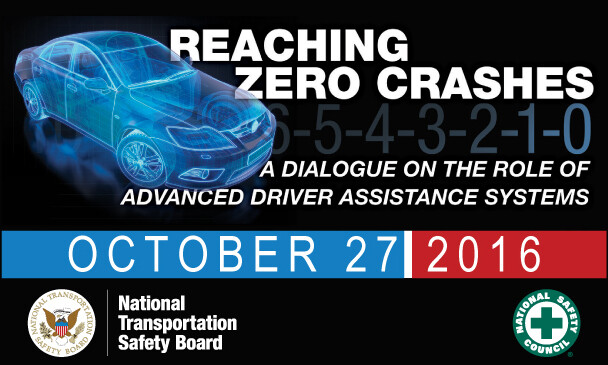Posted on October 24th, 2016
Event Will Highlight Need for Consumer Education on Car Safety Tech

This Thursday, the National Safety Council and National Transportation Safety Board will host an event on the role of advanced driver assistance systems (ADAS) in reducing deaths on the roads. These technologies hold great promise in reducing the 94 percent of traffic crashes that can be attributed to human errors in judgment or action.
The introduction of these technologies could not be coming at a better time.
According to National Safety Council estimates, there were 38,300 motor vehicle fatalities in 2015. That’s an 8 percent increase compared with 2014 – the highest year-over-year percentage increase in 50 years.
And it’s getting worse: New estimates predict that deaths are increasing at an even higher rate in 2016.
Most of these deaths were preventable. Advanced driver assistance systems can play a significant role in saving lives. In fact, a recent study found that three of the most advanced ADAS technologies available today – forward collision warning, lane departure warning and blind spot warning – could eliminate more than 10,000 deaths if used correctly.
The NSC and NTSB event will bring together experts – researchers, industry leaders and more – to help us understand how these systems can prevent traffic deaths.
Among other topics, they will discuss how we can encourage manufacturers to add these life-saving technologies to today’s vehicles. The afternoon discussions will highlight the most important aspect of how ADAS technologies can prevent traffic deaths: getting the drivers on-board and using them correctly.
The speakers will address the following challenges facing educators and car makers today:
- Not all ADAS are named or even function the same – making it difficult for drivers to know what they’re buying or what’s in their car currently.
- It’s not always clear how to best use these systems – and drivers aren’t always given clear directions from the outset.
- ADAS technologies are changing quickly, with new capabilities or new systems every new model year – making it difficult to keep up.
Also discussed will be MyCarDoesWhat – a potential solution to these issues, and more.
MyCarDoesWhat uses graphics, animations, videos and other tools – including this blog you’re reading – to help bridge the gap between an ever-changing field of technology and the public’s understanding of it.
Here, we highlight 30 of these systems and explain them in as easy-to-understand language as possible. For more in-depth information, you can see our Deeper Learning section or try out our interactive games. And our blog and newsletter keep you posted on what’s coming up in the future.
We hope MyCarDoesWhat can serve as an educational tool for you, your co-workers, your friends and your family for years to come as ADAS technologies become more and more part of driving. And as the self-driving car is still many years off, our best solution to preventing traffic deaths today is an educated and aware driver – and the technology to match.
The NSC and NTSB event “Reaching Zero Crashes: A Dialogue on the Role of Advanced Driver Assistance Systems” will be live-streamed starting at 8:30 a.m. Eastern time this Thursday, Oct. 27 at http://www.ntsb.gov/drivertech. Visit mycardoeswhat.org/drivertech for more information and RSVP if you’ll be attending.

